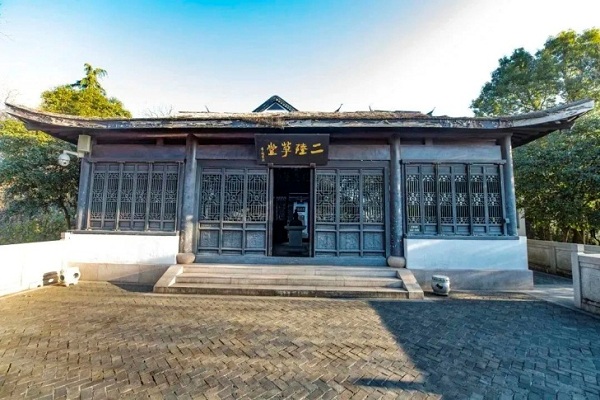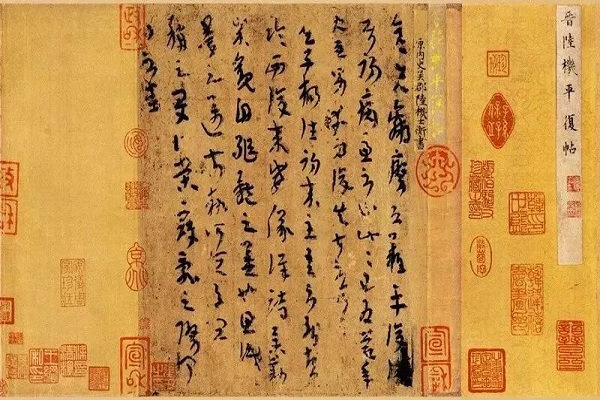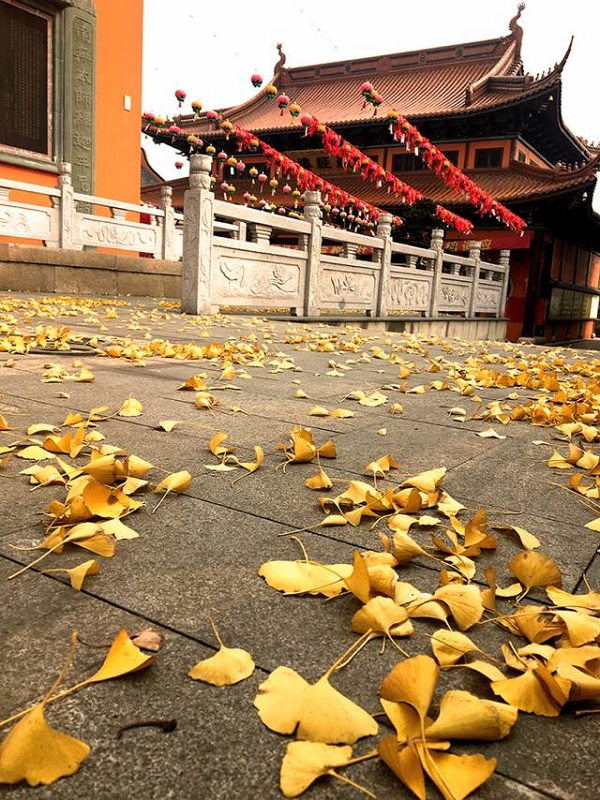Nestling at the southernmost tip of the Nine Peaks area in the Sheshan National Tourism Resort – located in the Songjiang district of East China's Shanghai – stands Small Kunshan Mountain.
This picturesque neck of the woods boasts a rich cultural legacy, being the hometown of the renowned literary figures of the Western Jin Dynasty (317-420), Lu Ji and Lu Yun.
The mountain – at an elevation of only 55 meters – used to be called Kunshan, but as this was the same name as a well-known mountain in Jiangsu province, people renamed it Small Kunshan Mountain.
A panoramic view of Small Kunshan Mountain reveals a landscape resembling a figure-of-eight, gracefully undulating and reminiscent of a reclining bull when seen from afar.
The northern peak, looking rather like the head of a bull, features rock formations resembling a bull's eyes, nose and nostrils – earning it the name Niutou Mountain or Bull's Head Mountain in English.
The mountain harbors cultural gems such as the Two Lu Reading Platform, Two Lu Thatched Cottage and the Nine Peaks Temple.

The main entrance of the Two Lu Thatched Cottage. [Photo/WeChat account: sheshanlvyoutopnews]
Adorned with a plaque bearing its name, the Two Lu Thatched Cottage serves as the primary exhibition hall for the famous Lu brothers – Lu Ji and Lu Yun – and their heritage.
The site features statues of the brothers, as well as a replica of Lu Ji's masterpiece, Ping Fu Tie, regarded as being the oldest surviving ink manuscript in the country.
After a remarkable journey spanning over 1,700 years, this ancient relic now finds its home in the Palace Museum in North China's Beijing.

A section of the calligraphic masterpiece Ping Fu Tie by Lu Ji. [Photo/WeChat account: sheshanlvyoutopnews]
Beneath the Nine Peaks Temple lies the Two Lu Reading Platform – a 24-meters-long, 8-meters-wide expanse carved by human hand, with a towering 6 meters stone wall in the background.
In the year 280 AD, Lu Ji and Lu Yun returned to their hometown of Huating – the ancient name of Songjiang district – commencing a decade of profound scholarly pursuits and secluded contemplation.
Their home at the foot of Small Kunshan Mountain witnessed the construction of the reading platform. It was during this decade of rigorous study that they achieved the pinnacle of their literary creativity.
Perched atop the northern peak of Small Kunshan Mountain is the Nine Peaks Temple – originally known as the Sizhou Pagoda Complex – built in 1165 AD during the Southern Song Dynasty (1127-1279). In the Ming (1368-1644) and Qing (1644-1911) dynasties, the temple complex expanded to include various halls and pavilions.

The grounds of the Nine Peaks Temple are covered with golden gingko leaves in autumn. [Photo/WeChat account: sheshanlvyoutopnews]
Today, the Nine Peaks Temple stands as one of the most distinguished temples in the Jiangnan region – the areas south of the Yangtze River.


